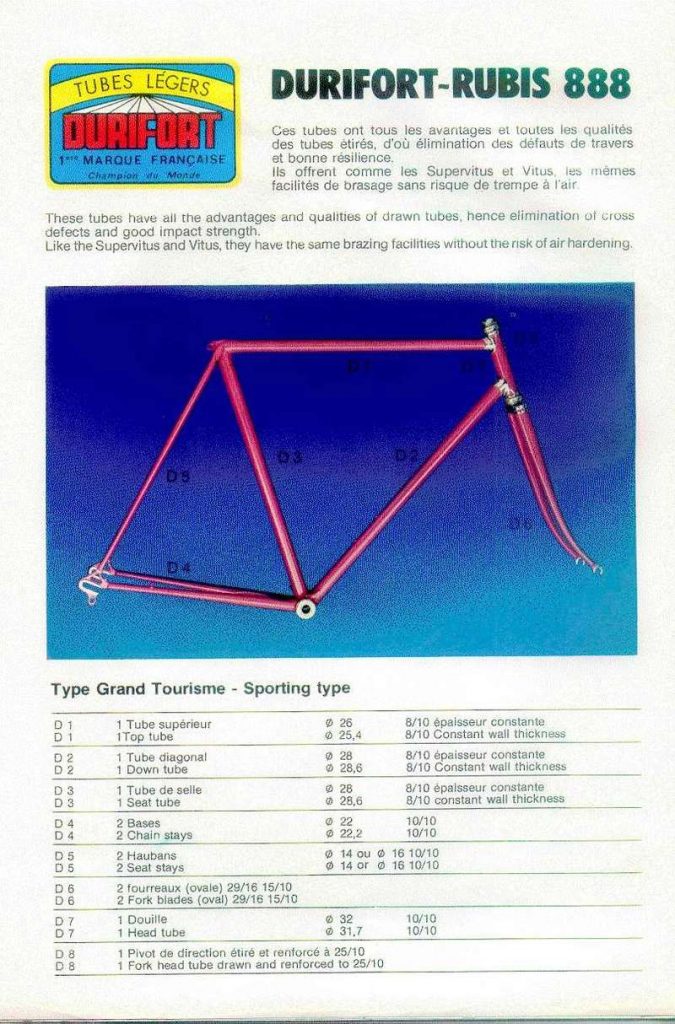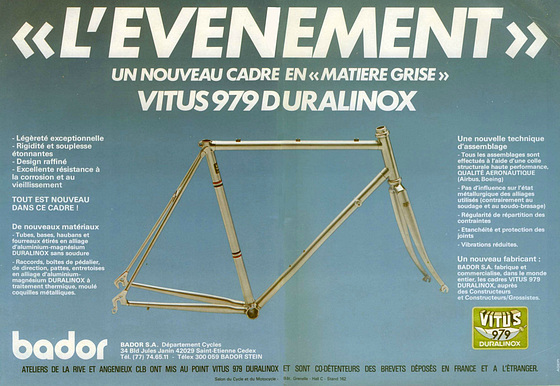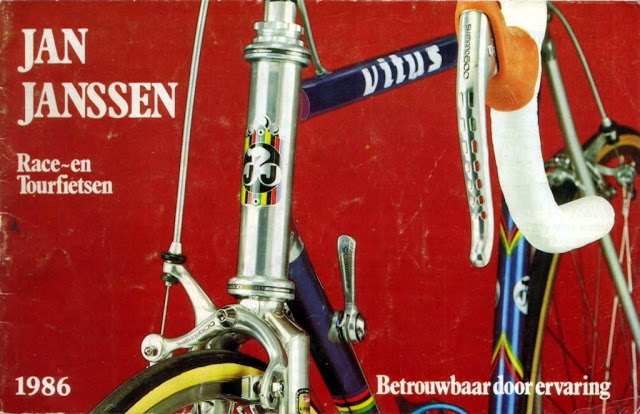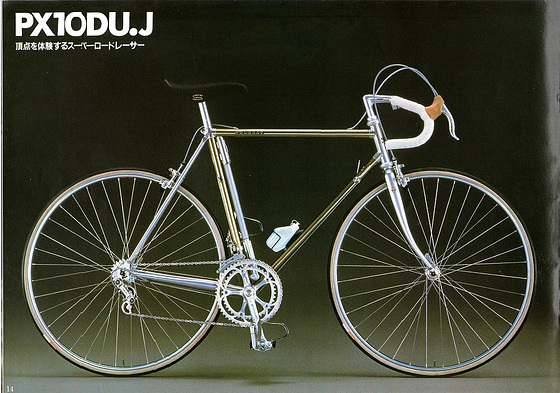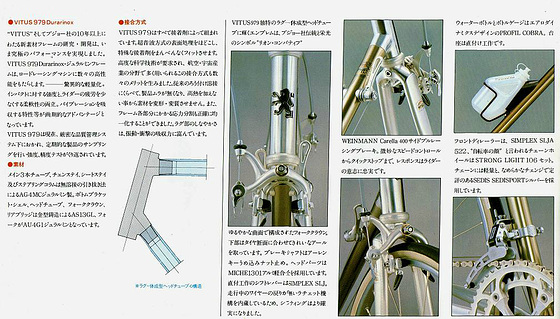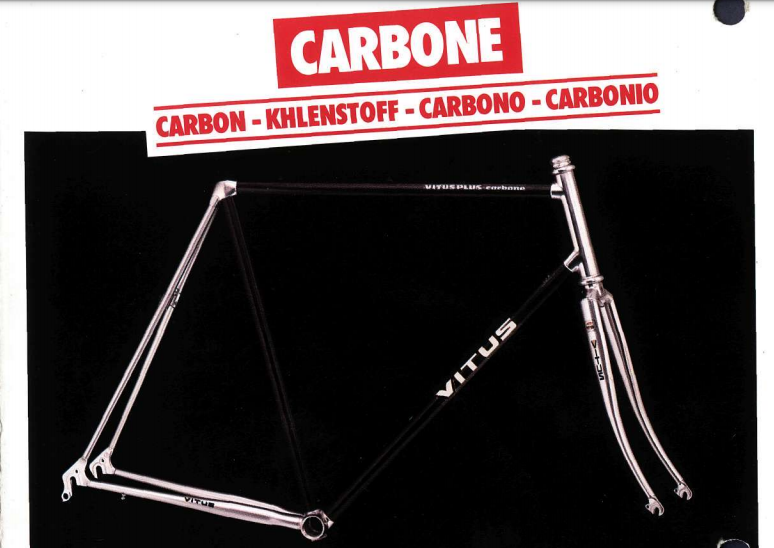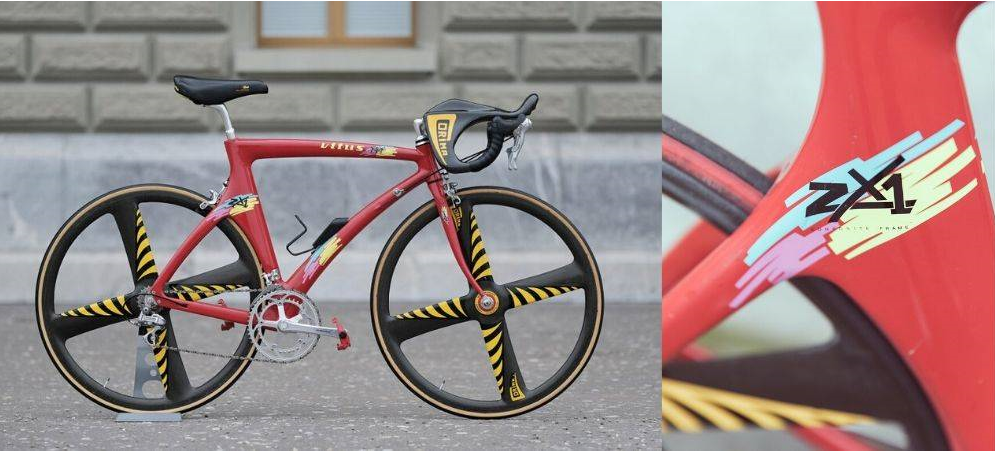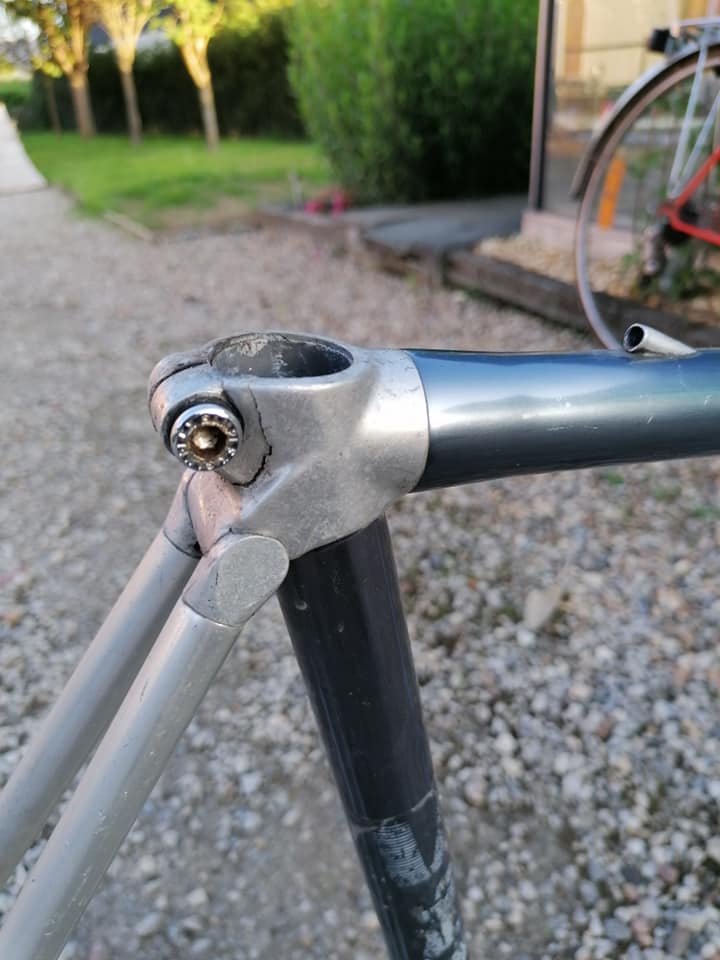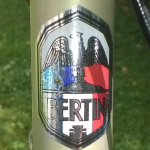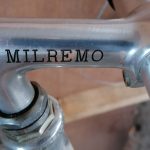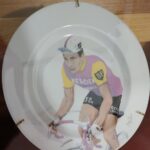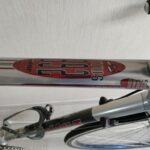Vitus frames in aluminum: anyone who followed cycling in the 1980s will certainly remember Sean Kelly who stringed together successes with the Kas team on his Vitus 979. They have also been a sought-after collector's item for collectors of vintage racing bicycles for several years now. After a long search I was able to find a copy in my size, but it was not easy as the offer is becoming increasingly scarce.
 Sean Kelly in 1986 op zijn Vitus 979 – “Sean Kelly & Patrice Esnault ´86” by Numerius is licensed under CC BY-ND 2.0
Sean Kelly in 1986 op zijn Vitus 979 – “Sean Kelly & Patrice Esnault ´86” by Numerius is licensed under CC BY-ND 2.0
Origin of the Vitus brand
The French Vitus brand was first exploited as a high-performance steel tube set in 1930 by Petit Tube de Précision, a company based in Maisons Alfort but was soon taken over by the French steel manufacturer Ateliers de la Rive who already produced the steel pipes Durifort and Rubis.
Because the Vitus tubes were of better quality and lighter, they were used for the better frames. The British Reynolds and the Italian Columbus thus got a direct competitor.
Many French bicycle manufacturers such as Peugeot, Mercier, Motobecane, Bertin, … used Vitus tubes. Ateliers de la Rive systematically improved the quality of their steel tubes, resulting in the high-quality series Vitus 171, 172, Super Vitus 971, Durifort Rubis 888, Super Vitus 980, 181, 788, etc.
Vitus 979 Duralinox frame
However, the real success came with the takeover in 1978 by the company Bador, which researched the assembly of pipes by gluing. This resulted in 1979 in the Vitus 979 Duralinox, the first glued aluminum frame.
Unlike their closest competitor, the Italian Alan who was the first to introduce a glued frame, all tubes in the lugs and bottom bracket were glued and no glue and screws were used. Compared to the usual tubular steel, the aluminum frames were much lighter and could be assembled faster. It was an immediate success and the Vitus brand made international name recognition.
Dit bericht bekijken op Instagram
This innovation was the result of a collaboration between Bador, which assembles and glues; CLB, which produces glued aluminum fittings, and Ateliers de la Rive, which produces the pipes.
The 80's and Sean Kelly
In the 1980s, more and more well-known bicycle manufacturers started purchasing Vitus 979 frames and then putting their own brand name on them. Not only in France but also in the low countries (Gazelle, Jan Janssen), Italy (Willier), etc. you saw the typical characteristics of aluminum Vitus 979 frames appearing everywhere.
An important part of this success was the Irish cyclist Sean Kelly who was one of the first to ride a Vitus 979 Duralinox frame and also took victories in numerous Classics as well as in the 1988 Vuelta. Kelly rode with Vitus for almost 10 years racing bikes.
More and more cycling teams in professional cycling started riding with a Vitus 979 frame. At one point there were even 6. Aluminum frames had the advantage of being lighter than steel frames and more or less retaining the stiffness of steel.
Besides Sean Kelly, the most famous riders who rode a Vitus 979 frame are Luis Herrera, Phil Anderson, Alan Peiper and Stephen Roche.
Vitus Carbon Kevlar, Vitus 992 and Vitus ZX1
In 1984, Vitus again launched a new technological advancement with a Vitus 979 assembled with carbon tubes: the Vitus Plus Carbon, Vitus Carbon Kevlar, Vitus Carbon 3, 7 and 9.
In the 90s Vitus, just like their competitors, also started experimenting with frames built from 1 piece of carbon, the so-called monocoque frames. This resulted in the ZX1 which had a futuristic look and was used by Laurent Fignon in the Tour de France.
Because in the early years of carbon most cyclists and teams did not yet trust carbon, steel and aluminum frames were still made in the 90s. Vitus released the Vitus 992 in 1992 in which the headset was partially integrated. In 1995, the Belgian cycling team Lotto rode 992 racing bikes with Vitus.
Have a look here at my Vitus Ovoid 992 Competition
Dit bericht bekijken op Instagram
Dit bericht bekijken op Instagram
End of an era
In the late 1990s, a difficult period started for the company with the rise of the Taiwanese market as well as the boom of the mountain bike industry. As a result, Vitus came into the hands of various owners, including Look and Time. Due to the declining production, Vitus closed its doors in 2008, but was fortunately bought in 2009 by the Irish internet giant Chainreactioncycles, where Sean Kelly has been appointed as ambassador.
Finally: watch out for micro-cracks
Pay close attention when you buy a vintage Vitus racing bike because the bikes often have a tendency to show small sheds in the lugs. Even though it happened more than once that glue came loose causing the tube to become loose in the lug.

